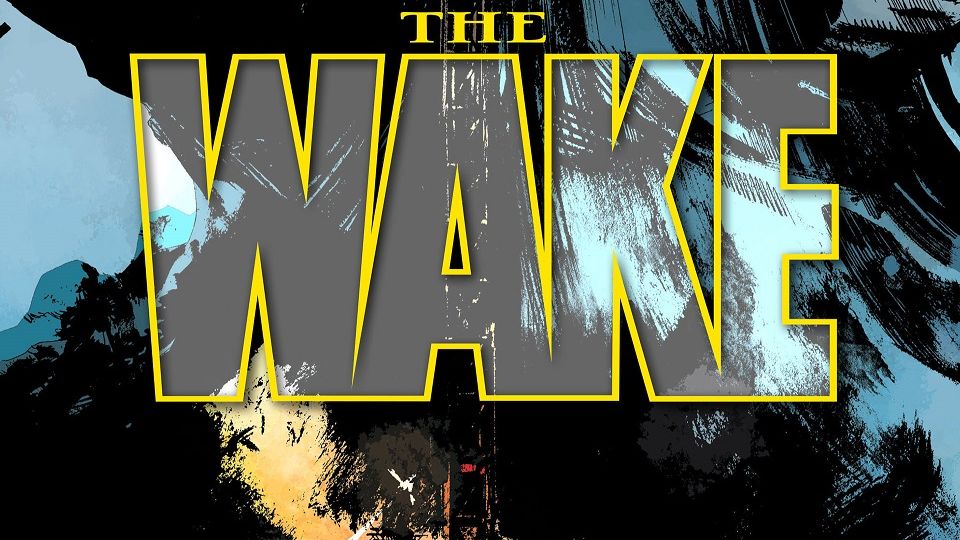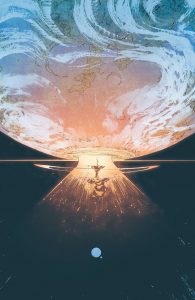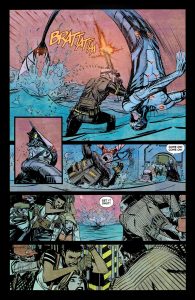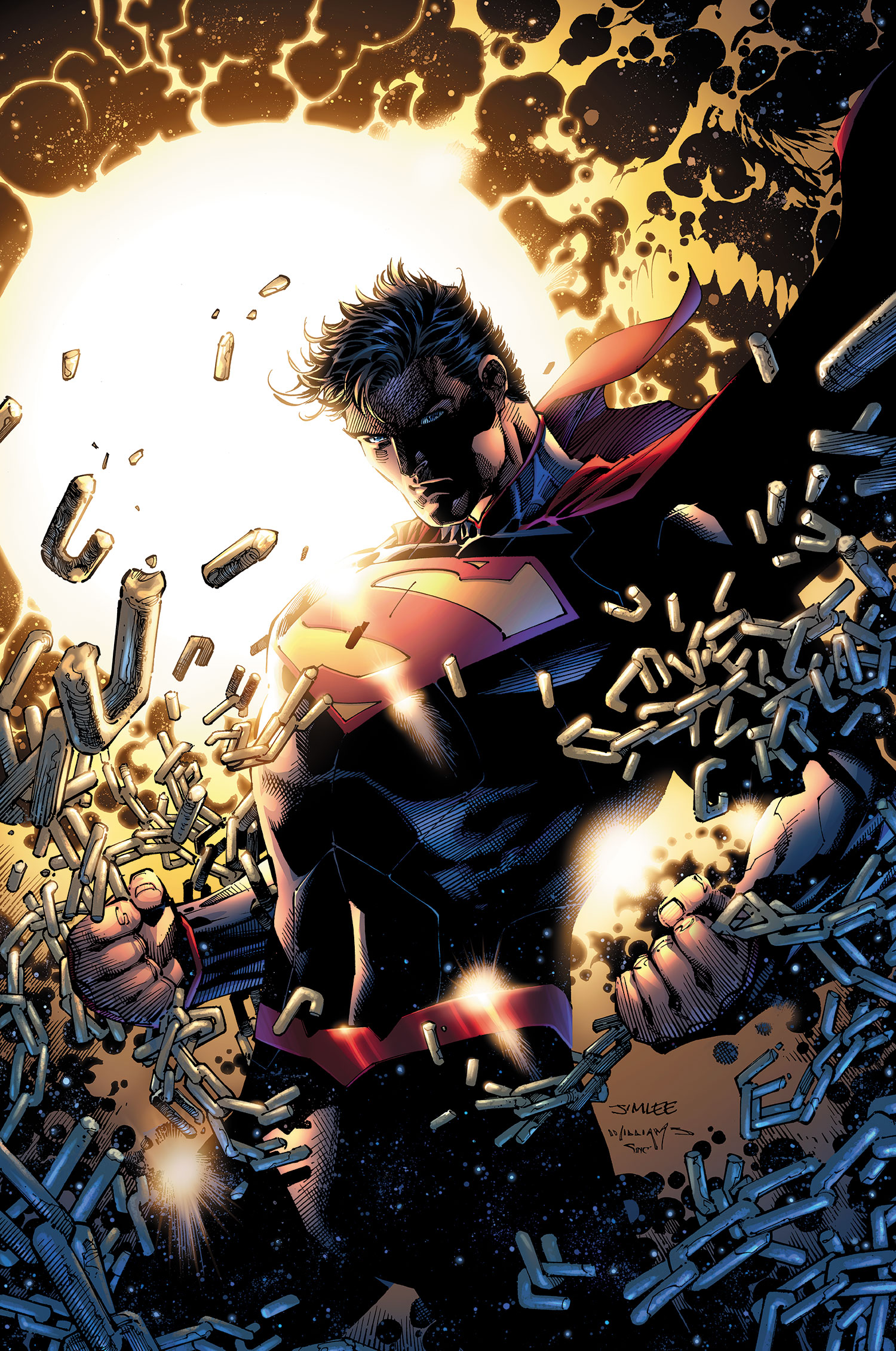
The Wake #3 opens with a title labeled “The Disaster” and a two-page scene of what looks like a meteorite crashing into the earth and causing a cataclysmically huge explosion. Could this be the origin of our presumed fish-men from the prior issues? We can only make assumptions at this point, with only three issues of a ten-issue series released. But that’s what makes this such an intriguing comic; the mystery behind everything.
I myself am a big fan of Scott Snyder’s work with short stories (Voodoo Heart is a strangely surreal yet ultimately human reading experience) and his work in comics (except for a small drag from issues 12-17 of Swamp Thing but he ended it on a pretty high note) and I make no effort to mask this admiration. However, I will say his work is not exempt from criticism. But I think criticism shouldn’t be used to draw attention to the bad qualities of something more so as it should be used as a tool to improve upon one’s own efforts.
So in order to “help” Snyder improve upon himself, I have to draw attention to one of the bad qualities of his stories: the rushed ending. Both Court of Owls and Death of the Family both were very energetic and well-paced for the first 4/5’s of each arc but the endings came in, and they were incredibly rushed. The reveal of Owlman had little buildup and was a pretty sudden reveal and Joker’s big endgame seems like it was scrambled to be done in one issue. This is his inherent problem. He seems to spend a lot of time assembling all of these game pieces on to one board and then blows all of his big moves as quickly as possible with little or no forethought as to how this might affect his endgame. So how do we as critics help turn Snyder’s almost singular bad quality into a good one?
We propose ways on how to fix it.
But it seems Snyder has already beat me to the punch. The Wake is damn near perfectly paced. We get plenty of action in this issue, and a lot of story and character development that leads to the furthering of the answer to the mystery at the central core of the story: what are these creatures, where are they from, and why do they want us?
Snyder seems to provide context clues through elements in the visuals and the dialogue. We get a better look at the sea creature(s) here, which is a sort of mechanical yet organic look (Sean Murphy’s penciling is absolutely wonderful at keeping the details vague yet clear enough for us to work something out). We even get one of Snyder’s trademark anecdotal monologues leading to a metaphor or another clue of the mystery (others may dislike this [especially those who regularly lambast his work for being indulgent on the monologues] but as I said earlier, I’m essentially a super-fan, and I love it) and this only deepens our understanding of the story, yet leaves us entirely in the dark as well. Until we get a clear, distinct answer to everything, we have to make base presumptions and false assumptions.
The mystery is portrayed, as stated earlier, by a mister Sean Murphy (of Punk Rock Jesus fame) whose scratchy, blotted art complimented by lots of shading is perfect for an undersea horror title. He’s very good at portraying the industrialized robotic nature of an undersea rig and the way water intersects with it. Underwater scenes aren’t typically the easiest to portray in a non-animated medium such as comics, but Murphy does a wonderful job. He evokes the claustrophobic expansiveness (I am aware this a contradictory paradox but I’m sure you get my point) of the ocean and the strange alienation the presence of its life forms gives off. Credit also goes to colorist Matt Hollingsworth for giving each separate section or “era” of the comic a distinctly different presence in color. Too often the colorist gets shafted in the process of review criticism when in fact, he or she or they should not. The letterer Jared K. Fletcher also gets credits for correct placement of the dialogue and monologue boxes (in that it doesn’t obscure or ruin a particularly great scene). Everything here works in conjunction with Snyder’s master-plan, his endgame move that sweeps all the other pieces off the board.
So now that Snyder has seemingly beat the critics at addressing his own faults, where does he have left to go? I’d presumably say nowhere but up but that’s never true in comics. Old habits die hard, and one can easily slip into those old habits or formulas (like Die Hard sequels). However, as a (particularly selfish) reader and critic, I expect Snyder to get better and better, and never fluster or fall down lest my jaded cynicism get the best me. It’s a steep mountain to climb (undersea rig?) but I’m sure Snyder, Murphy, Hollingsworth, and Fletcher will be able to make it to the top, section by section.

















HArd To Take The Review Seriously When It Misses The Obvious Caption Indicating The Opening Cataclysm Takes Place On Mars